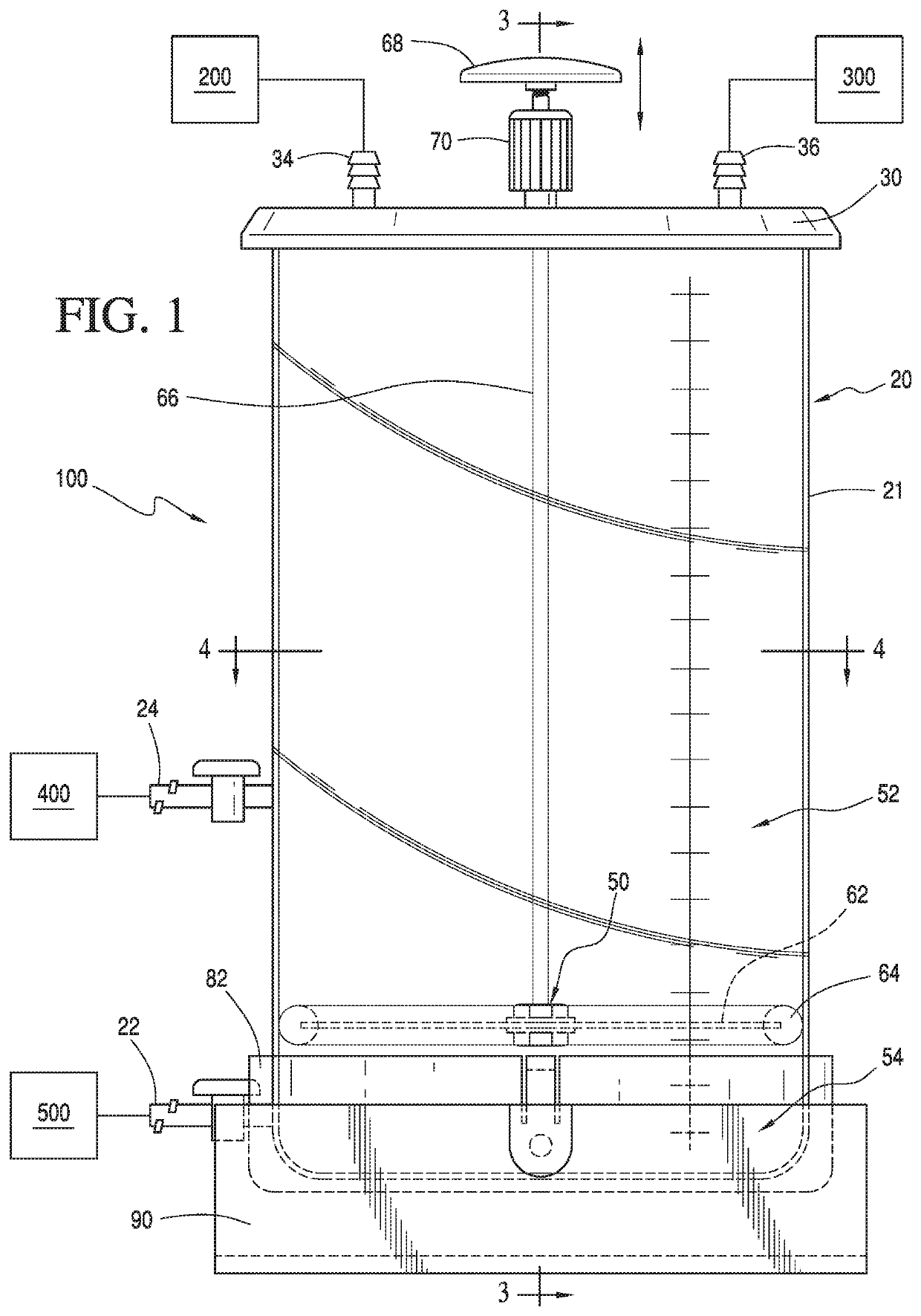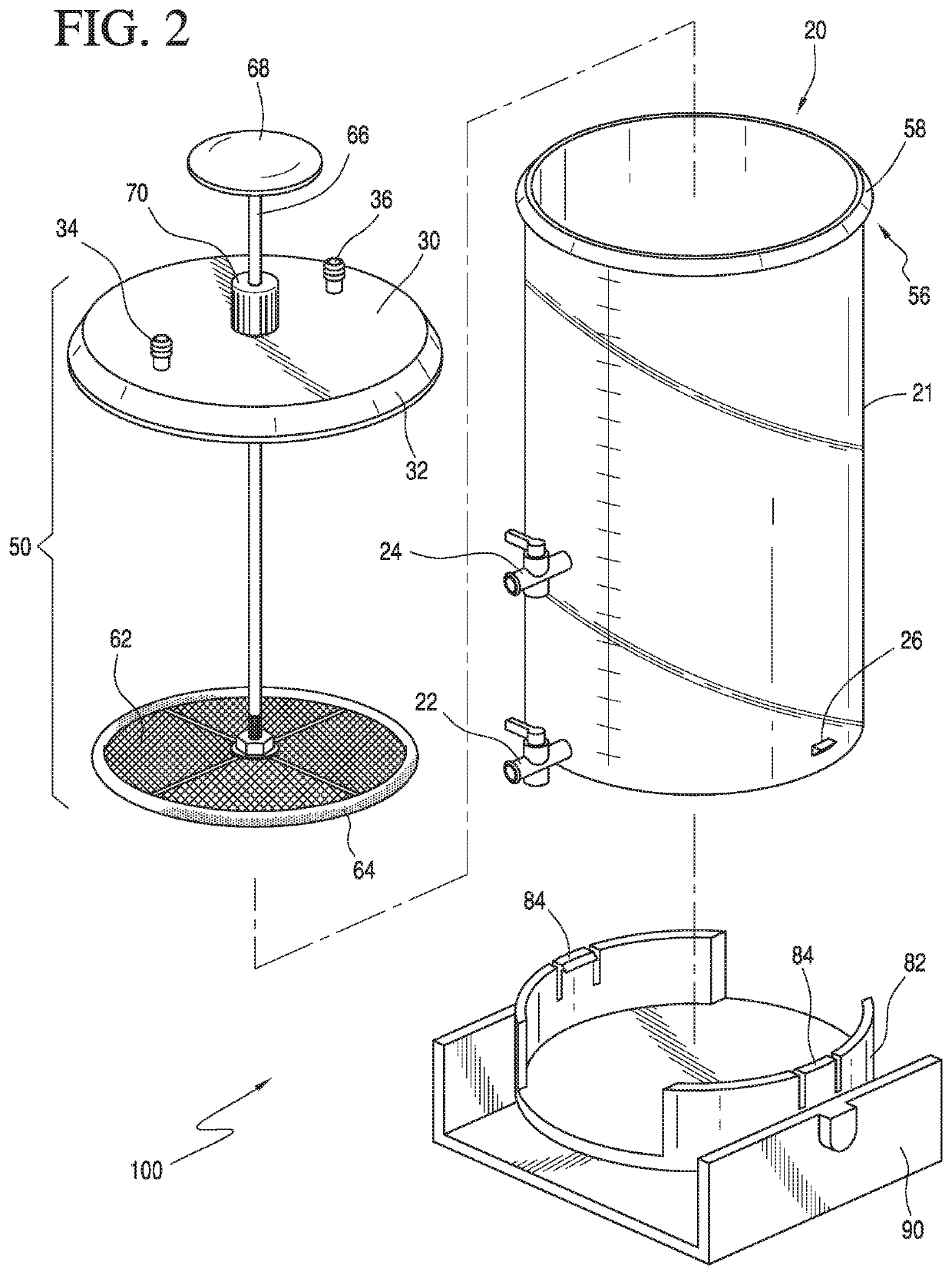Adipose tissue separation device and methods
a tissue separation and adipose tissue technology, applied in the direction of biomass after-treatment, suction drainage containers, wound drains, etc., can solve the problems of reducing the likelihood of tissue rejection, and affecting the ability of liposuction to remove tissu
- Summary
- Abstract
- Description
- Claims
- Application Information
AI Technical Summary
Benefits of technology
Problems solved by technology
Method used
Image
Examples
Embodiment Construction
[0016]Referring to at least FIG. 1, a tissue separating device 100 in accordance with a preferred embodiment of the present teachings is shown. The tissue separating device 100 can include a canister device 20 including a canister body 21 and a lid 30. The canister device 20 can include a vacuum connector 34 and a tissue retrieval port 36 which can be arranged in the lid 30. The vacuum connector 34 can be operatively coupled to a vacuum source 200 via tubing. The tissue harvesting port 36 can be operatively coupled to a harvesting device 300 via a liposuction cannula. A sidewall of the canister body 21 can include a fluid evacuation port 22 and a tissue harvesting port 24. The tissue separating device 100 also includes an adjustable height filtration mesh assembly 50 that is operable to divide the interior of the canister device 20 into an upper vacuum chamber 52 and a lower vacuum chamber 54.
[0017]In use, a quantity of fatty liposuction aspirate can be directed into the canister de...
PUM
 Login to View More
Login to View More Abstract
Description
Claims
Application Information
 Login to View More
Login to View More - R&D
- Intellectual Property
- Life Sciences
- Materials
- Tech Scout
- Unparalleled Data Quality
- Higher Quality Content
- 60% Fewer Hallucinations
Browse by: Latest US Patents, China's latest patents, Technical Efficacy Thesaurus, Application Domain, Technology Topic, Popular Technical Reports.
© 2025 PatSnap. All rights reserved.Legal|Privacy policy|Modern Slavery Act Transparency Statement|Sitemap|About US| Contact US: help@patsnap.com



